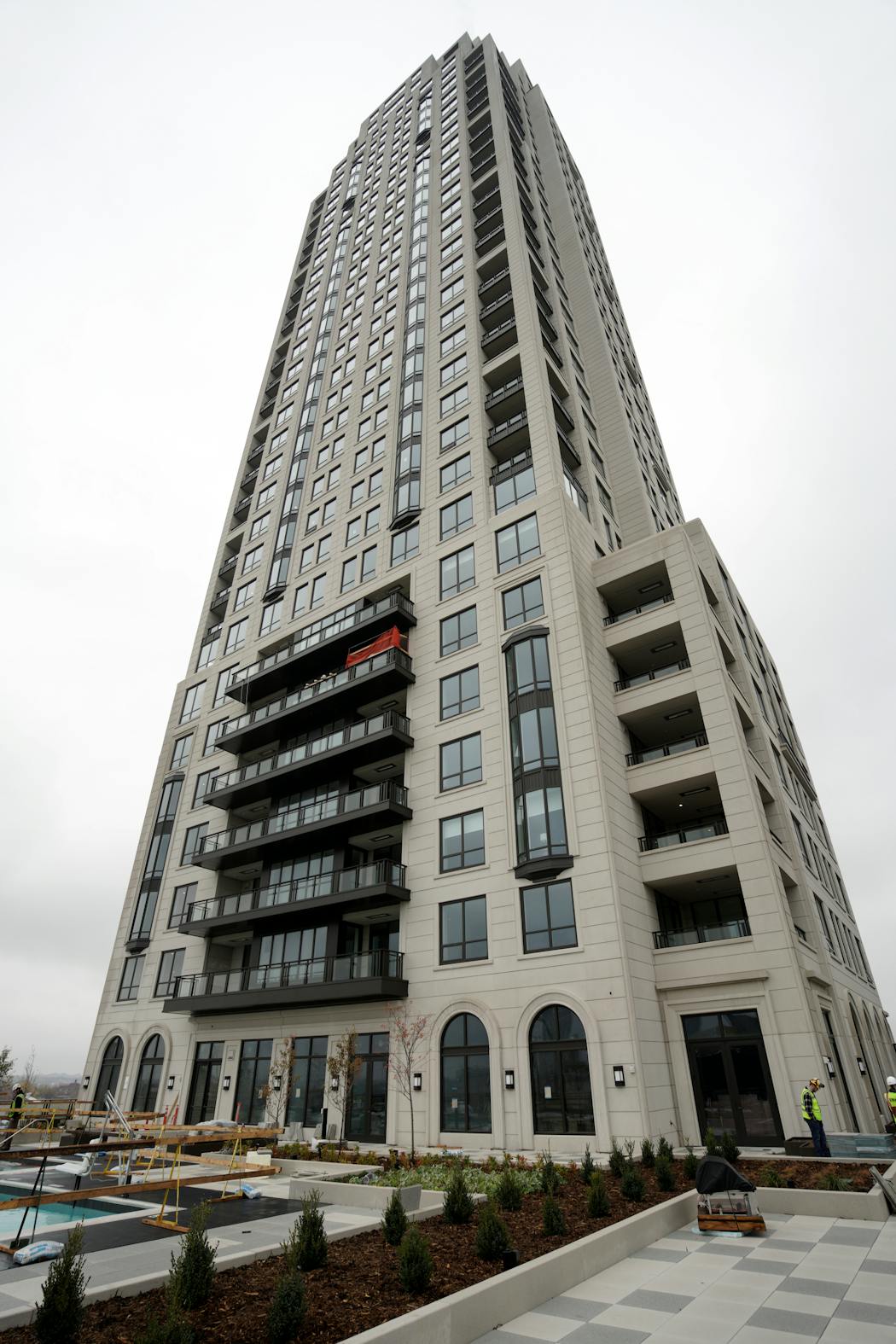What if we're done with skyscrapers?
Not to say the ones we already have in the Twin Cities are going anywhere. Properly maintained, a skyscraper will stand for a long time. The concrete may weaken over time, but the steel will be strong, the IDS Center will not crumble. The Wells Fargo Center will not lean and topple in your children's lifetime. Your grandchildren will likely see the skyline of Minneapolis or St. Paul with the same tall towers you know today.
But will there be additions? There's a proposal by Hines to build a 29-story office building at 900 Marquette Av. S., but it might be the last one built for a while, unless everyone suddenly decides they hate working from home.
So, are we done with tall office towers? Will IDS forever reign as the highest point the Minneapolis skyline reached?
Let's back up and consider the purpose of the skyscraper.
Obviously, it's meant to make money. Of course, it stacks people into dense layers instead of spreading a commercial enterprise all over town. Its least important practical element is how it looks, but that's actually a critical component.
Since the early days of the tall buildings, the skyscraper — be it 10 floors, in the infancy of the structures, or a hundred — has been a boastful object, a claim to fame on behalf of the money men, a symbol of corporate or municipal health. A city wasn't a proper city without one, and every American city got its own, just to show that it had arrived.
For Minneapolis, the 26-story Rand Tower, built in 1928, was probably the one that signaled the city's status. For St. Paul, perhaps the 32-floor First National Bank Building put the city on the map in 1931. There were other tall structures, but nothing that said skyscraper the way these Gotham-flavored towers did.
The New York-style skyscraper is a defining element of American urbanism. Until the postwar era, these soaring landmarks were uniquely American in design — either classically ornamented like the products of a Roman Empire that never fell, or sleek, machine-age towers that boasted new forms, new decorations, new ideas.
The Depression killed all that.
The postwar importation of European skyscrapers, originally meant for worker housing in flattened neighborhoods, brought an international style that drained the jostling competition from the skyline. The skyscraper became an abstract object, not a mountain hewn into streamlined form. But you were still awed by its height, the way it dominated its elder rivals, the way it rewrote the look of your hometown. It always felt like good news when a new skyscraper was announced, proof that the city was still expanding, still growing up.
But what if that's over?
Office culture, after all, has been upended. Two weeks of work-from-home turned into forever. It seems as if most people don't want to go downtown to work anymore, at least not five days a week. The commute's a drag, the cubicle's beige, people interrupt you when you're working, the pets are home alone. Who needs it?
This sudden change gave the Etch A Sketch of cities a vigorous shake. We don't know what to draw on the blank frame.
So many of the things that were cool about our downtowns — the skyway commercial ecosystem, the scrum and flow of random interactions with fellow citizens, the sense of a shared place and a common work culture — have been called into question by the pandemic. Turns out that many of us can do without all of that, and quite easily.
No one's going to build a 75-story office tower if no one wants to come in to work.
Civic boosters will point to the new residential towers downtown and say that's the future. True, the 42-story Eleven condo tower, on the edge of downtown, is one of the best buildings put up since the 1988 Wells Fargo Center tower. The Harmonia project at 255 2nd Av. S., site of the old Wells Fargo Operations Center, will bring density and height.
And old office buildings can be remade into housing, too. The Rand was turned into a hotel. The 6 Quebec (129 S. 6th St.), now condos, was once an office building, and its modest scale made its conversion seem like a natural evolution. The old Northstar Center East, a 106-year-old building that was once considered a skyscraper, is being considered for a conversion to residences.
It's not ridiculous to think that postwar office towers could be reused. Many "Mad Men" era office blocks in New York are being converted for residential life.
But there's something about a skyline full of buildings where people live vs. one where people work. It's an intangible difference, hard to quantify. A high-rise intended for residential doesn't seem at odds with itself. A high-rise area in which buildings have been stripped of their original purpose feels like remnants of a lost civilization, occupied now by squatters, living in the ruins of commerce.
Perhaps it's the obvious lack of residential amenities, such as balconies and green space. But maybe it's that these buildings wear their purpose on their exteriors, and we can't look past just the accumulated memories we have of them being office towers.
This may change. A new generation of workers may tire of being home all the time and be lured downtown by tales of the days when people put on good clothes — suits, ties knotted tight, shoes shined — and went to the city and were whooshed up to their offices — their second homes — in the sky. Sounds almost romantic. Sounds so grown-up.
Or the downtown office market may start looking good to companies that couldn't afford the rent before, and downtown will fill up with a new crop of businesses. Or maybe there's a different sort of revival we can't predict.
Downtown Minneapolis has taken it on the chin time and again, and come back, but not because of grand plans or schemes to reinvent it. Downtown came back because there is nothing like the forest of glass and stone, the cheek-to-jowl with the new, the sight of the skyline toting up the accumulated accomplishments of our town.
There may not be another tall office tower built downtown for a very long time. But do you want to feel a little awe, some city pride? Downtown is where you go. Where the skyscrapers are. The one place in town that says, "Look up."

Minnesotans find beautiful views, food and fun on trip to New Orleans via train

Black Sheep pizza sued for $200K back rent at closed south Minneapolis shop
Bake like it's 1999 with this recipe for Prince's Favorite Cookie

What's that redder-than-red bird?






